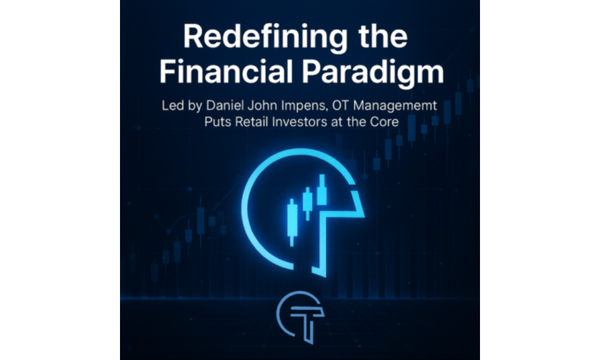Tether Position Sizing and Portfolio Allocation Strategies for Investors
When constructing an investment portfolio, determining the appropriate size of each position is a crucial decision. For crypto investors, allocating to stablecoins like tether can be an important part of balancing risk versus reward. Applying effective position sizing principles allows investors to maximize returns while minimizing downside.
Finding the Right Balance with Tether
H1: Finding the Right Balance with Tether
Tether (USDT) has become a staple in many crypto investors' portfolios. As a stablecoin pegged to the U.S. dollar, tether provides a way to hedge against volatility without exiting positions completely. Determining the right proportion of tether to other crypto assets depends on an investor's risk tolerance and goals.
Conservative investors may hold a larger tether position, 50% or more, to protect against frequent market swings. More aggressive investors may choose a smaller tether allocation, 20-30%, still allowing room for growth while limiting maximum losses. Dollar-cost averaging into tether on market upticks can help balance long-term holdings.
Position Sizing Models for Optimal Returns
H1: Position Sizing Models for Optimal Returns
When determining position sizes, utilizing structured models can help investors maximize portfolio gains while controlling risk. Popular methods include the fixed fractional, fixed ratio, and Kelly criterion models.
The fixed fractional model involves allocating an equal fraction of total capital to each position. For example, a five asset portfolio using a 20% fixed fraction would allocate 20% to each asset. This allows for diversification but lacks flexibility.
The fixed ratio model sets position sizes relative to the highest conviction holding. If an investor's largest position is 20%, other assets may be set at 0.5X or 0.25X that amount. This allows focusing capital but can concentrate risk.
The Kelly criterion calculates position size based on an asset's expected return versus volatility. Assets with higher expected gains balanced by lower volatility merit larger allocations. This data-driven approach optimizes growth.
Balancing Core Holdings and Speculations
H1: Balancing Core Holdings and Speculations
In addition to models, investors must decide which assets warrant "core" portfolio allocations versus smaller "speculative" positions. Core holdings like Bitcoin and Ethereum may occupy 40-60% of a portfolio, providing stability and growth potential. Speculations in new offerings can be limited to 10% or less given higher volatility and uncertainty.
A 70/30 core to speculative split is a common starting point, adjusted based on an investor's goals and risk tolerance. Rebalancing periodically is prudent, trimming speculative allocations on overperformance and increasing core positions during selloffs. Maintaining this balance promotes sustainable long-term gains.
Conclusion and Key Takeaways
H1: When should investors consider taking profits in a crypto bull market?
Crypto bull markets provide huge opportunities for gains but also great risks if not navigated prudently. While hodling strong assets long-term is often wise, investors should consider taking partial profits on overextended rallies to maintain a balanced portfolio. Some signs a peak may be approaching include parabolic vertical advances, extreme greed on sentiment indicators, and exponential price increases detached from project fundamentals. Securing some gains after such euphoric moves helps lock in returns ahead of eventual pullbacks. Profit-taking should be controlled however, as trying to time tops exactly is challenging. Laddering sells into strength can allow participation in further upside while benefiting from realization of prior exponential gains. With crypto's high volatility, prudently securing a portion of profits after sharp rallies helps balance risk for sustainable long-term growth.
H1: What are smart ways to utilize stablecoin yields through lending or staking?
As stable cryptocurrencies like tether pays no inherent yield, savvy investors increasingly utilize DeFi lending or centralized lending/staking to generate returns on stablecoin holdings without additional risk. Leading platforms like Aave, Compound, Celsius, and BlockFi offer ways to earn attractive yields on stablecoins, often 5-10% or higher. This creates largely passive income on allocated capital while maintaining liquidity and principal protection. Investors should research rates, risks, and withdrawal terms across platforms. Splitting funds across multiple trusted platforms can provide diversification and yield optimization. Excess stablecoins not needed for trading or holdings can be fully allocated to earn yield. Caution is still prudent, as decentralized protocols carry smart contract risks, and centralized platforms face custody and regulation risks. But judiciously tapping into stablecoin yields can provide alternative income streams without venturing far outside one's risk comfort zone. Expanding yield horizons beyond simple asset appreciation unlocks wider opportunities.
Quote
"Wise crypto investors must walk the line between greed and fear, judiciously taking risk but never losing sight of prudence. Patiently executed long-term strategies combining measured speculation and steadfast conviction ultimately bear the sweetest fruit."
Bullet List
- Start with core blue chip crypto asset holdings
- Add smaller speculative positions in emerging innovators
- Maintain an appropriate stablecoin allocation
- Utilize lending/staking yields on stablecoin holdings
- Rebalance portfolio periodically as market conditions shift
- Take partial profits on excessive rallies
- Dollar cost average into long-term winners
- Never risk more than you can afford to lose
Original Paragraph
Recent breakthroughs in A.I. assisted portfolio management tools allow everyday investors to leverage complex algorithms and massive data sets previously only available to institutional players. By combining powerful quantitative analytics like time-series forecasting, Monte Carlo simulations, and sentiment analysis with an intuitive user interface, these new fintech platforms level the playing field. Just as autopilot systems have made air travel more accessible, A.I. investment aides now bring sophisticated portfolio guidance safely to the masses. The wealth management industry will never be the same as human advisors and robo-advisors increasingly join forces, merging art and science to democratize prosperity. The future has never looked smarter.




